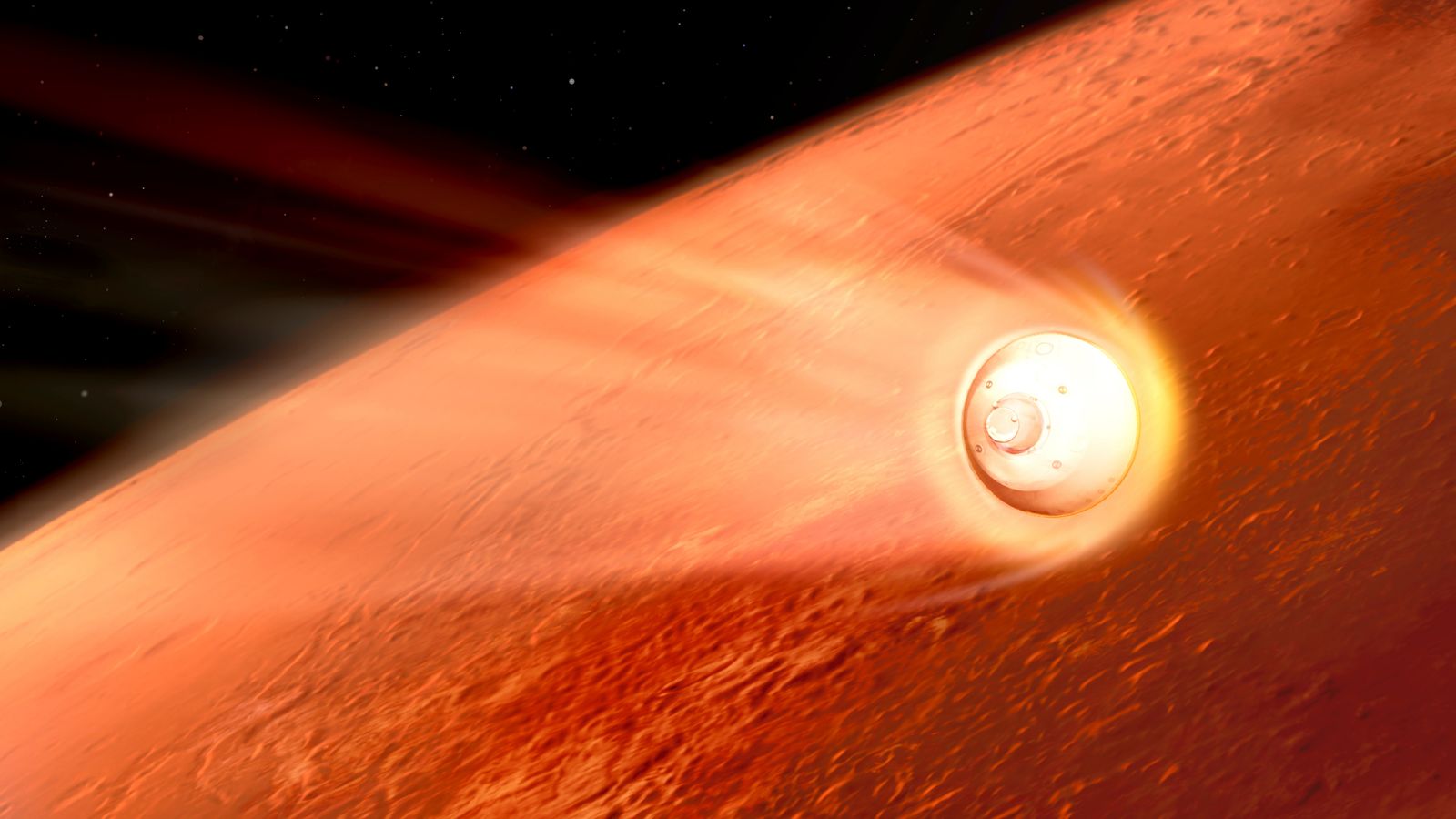NASA’s mission to search for signs of ancient life on Mars has successfully landed after a seven-month journey in space and a considerably shorter trip through the Martian atmosphere.
Perilous was the word chosen to describe the seven minutes between the car-sized Perseverance rover entering the atmosphere and reaching the ground – but it managed to safely touch down.
The success will mean relief for NASA managers, especially considering the $2.7bn (£1.9bn) price tag – most of which was already spent on research and development.
However, the hard work for the scientists begins now.
Perseverance touched down safely in an ancient river delta and former lake on the Martian surface known as the Jezero Crater. Here it will drill deep down into the sediment of where an ancient river once flowed, collecting material that may hold signs of life.
The Jezero Crater is full of obstacles and dangers to the rover, including boulders, cliffs, sand dunes and depressions, any one of which could end the mission, as the rover drives along the surface.
But the deposits in the crater are rich in clay minerals, which form in the presence of water, meaning life may have once existed there – and such sediments on Earth have been known to store microscopic fossils.
Scientists have also noted that the crater doesn’t have a depth which matches its diameter, which means sediment likely entered the crater through flowing water – potentially up to a kilometre of it.
The carefully selected samples of Martian rock and soil won’t be analysed immediately though, but sealed in tubes and left in a well-identified place, or more than one spot, on the surface of Mars for a future mission to collect.
“Detailed maps will be provided for any future mission that might go to Mars and pick up these samples for study by scientists,” explained NASA.
The rover will also include the first test of producing oxygen from Mars’ carbon-dioxide atmosphere, paving the way for human explorers to use natural resources on Mars.
Perseverance is also equipped with a miniature helicopter named Ingenuity, which weighs just 4lb (1.8kg) and will be the first rotorcraft to fly on another planet, although that test mission isn’t due until a while after the landing.
“The laws of physics may say it’s near impossible to fly on Mars, but actually flying a heavier-than-air vehicle on the red planet is much harder than that,” NASA quipped.
The little chopper underwent a series of drills simulating the mission in a testing facility in California, including a high-vibration environment to mimic how it will hold up under the launch and landing conditions, and extreme temperature swings such as those experienced on Mars.






















